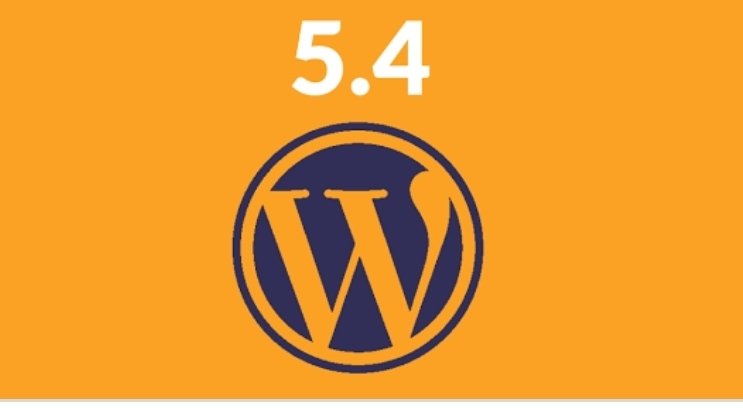WordPress for Android version 5.4 came up with new exciting features this week. This anticipated new visual editor. WordPress adds new smart lock feature and gravatar updating in version 5.4. There is a complete rewrite to use WebView. Via ContentEditable, it allows the app to render and edit HTML. All possible bugs are worked upon to make the editor work with various versions of Android on a variety of devices. Now, Gravatar images can be added on the ‘Me’ screen. Tap on the profile picture, launch the camera, select an image, resize for use is all you have to do to use the image as Gravatar. Now, you don’t have to switch to the Gravatar website. Along with Gravatar, there opens a way for Google’s smart lock for passwords. So, it makes the sign-in into app to fast, as username and password are automatically prefilled upon opening the app.

WordPress 5.4 Will Add Lazy-Loading to all or any Images. In the current announcement, WordPress stated that image lazy-loading will be by default feature in WordPress 5.4. This feature addition will ease the loading HTML attributes on all image elements. WordPress’ publishers will not get to use JavaScript or third party plugins for lazy-loading their images. Lazy-loading The lazy-loading HTML attribute tells a browser to either wait before downloading a picture or to download it directly. There’s no JavaScript got to accomplish this. There are three sorts of lazy-loading attributes but only two that basically matters: Lazy Eager Lazy, which can be enabled in WordPress 5.4 by default, means to attend until the users’ browser viewport is within a particular distance before downloading the image. Consequently, user behavior will surely speed up on WordPress sites. The “eager” attribute tells the browser to right away download the image. WordPress 5.4 Release Date WordPress 5.4 is currently expected to release on March 31, 2020. That date is subject to vary counting on how ready the discharge is. But WordPress has been excellent about meeting their deadlines. According to the WordPress announcement: The implementation seeks to enable lazy-loading images by default, providing the loading attribute with value lazy on the subsequent IMG tags: Images in post content Images in post excerpts Images in comments Images in text widget content Individual images rendered via wp_get_attachment_image() Avatar images rendered via get_avatar() Note that loading=” lazy” will only be added if the respective tag doesn’t yet include a loading attribute. In other words, to stop a picture from being lazy-loaded, it’s recommended to specify loading=” eager”. According to the WordPress comments, the lazy-loading attributes are going to be implemented during a manner that creates it easy to get rid of them. This is often important just in case future browsers begin lazy-loading all images by default, without the necessity for a loading attribute. Google has indicated that there are plans to automatically enable lazy-loading to all or any images when a browser within the Lite mode (formerly referred to as Data Saver mode), via web.dev.

Test Drive WordPress Lazy-Loading plugin was officially released by the WordPress team for testing purposes. Publishers who want to check it and provides feedback are welcome to download the plugin and provides it a try. The subsequent may be a list of a number of the features that come as standard with WordPress; however, there are actually thousands of plugins that reach what WordPress does, therefore the actual functionality is almost limitless. You’re also liberal to do whatever you wish with the WordPress code, extend it or modify in any way or use it for commercial projects with none licensing fees. That’s the sweetness of free software, free refers not only to cost but also the liberty to possess complete control over it.
Simplicity in WordPress
Simplicity makes WordPress make it possible to get simply online and publish as much ease. Nothing comes in between getting the website up and put your content out there.
Flexibility
Any type of website can be created ranging from photoblog, government, magazine or news, online community, professional, business to a network of websites. Users can build own application with beautiful themes and extended plugins.
Too wide Language optionality
Use WordPress in any language, you are comfortable in. It comes with more than 70 languages. It is easy to switch with language.
Publish with Ease
One can create pages or posts, format them, insert media and with the click of a button, content is live on the web.
Media Management
A picture says a thousand words. So, it is important to pick and easily upload images and media to WordPress. The image can be easily searched and uploaded only on WordPress itself. There is an option available to add a few image editing tools.
Full Standards Compliance
It means your website will work on today’s as well as further coming browsers. The website is equally beautiful now and in the coming future. It provides compatibility with the next generation of browsers.

Publishing Tools
Publishing your content, either public or private, comes with too much security. It makes it easy to manage your content. Create drafts, schedule any time publication, and look at your post revisions.
User Management
There are a variety of contributors on a website I.e. Administrators, editors, authors, contributors, and subscribers. They all have different profiles. WordPress simply allows them to be a part of your community.
What more do we aspect more from WordPress 5.4?
WordPress already leads the pack regarding market share and with improving existing functionality, the team aims to make a much stronger grip over the market. Some improvements to the WordPress Rest API are fairly possible. The WordPress Rest API will accompany developers to create more feature-rich products. It will make it easier to send and pull data from the website. Developers will be able to create applications using the platform as a framework with this update.
Building custom themes would become much easier. In the past, the user needed a minimum one simple development background to put together a WordPress theme.
Custom theme creation will become much faster with Gutenberg. Page builder plugins seem to lose some of its applicability. Gutenberg will not find a quick match for them at first. But it might discourage people from using them in the long run. There are already a lot of fantastic professional platforms page-builder tools that you can be used with WordPress.

